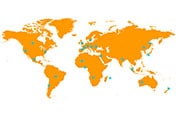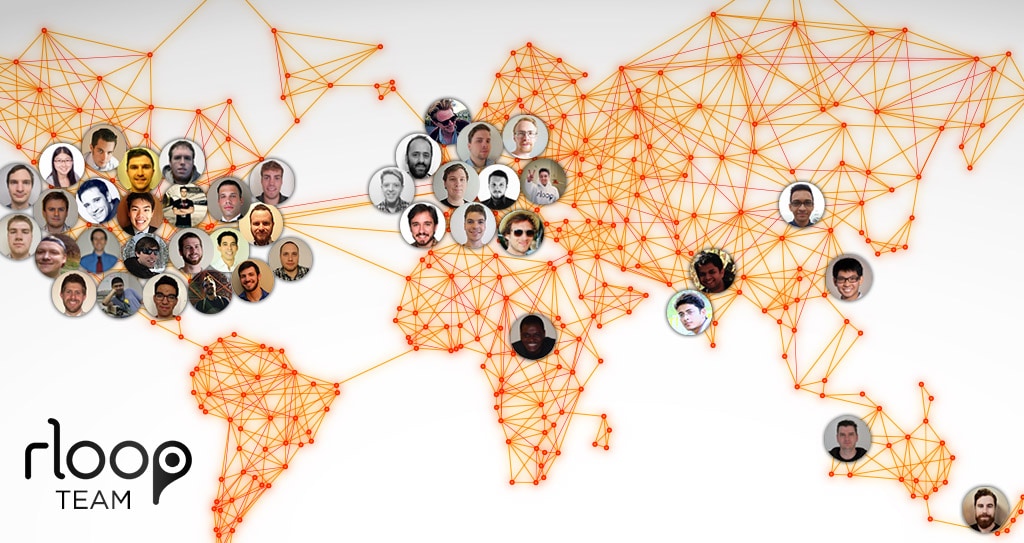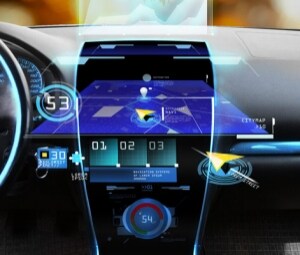
RLOOP - THE TEAM OF TOMORROW
In June 2015, the engineering community was challenged to invent prototype pods for the future of transportation – The Hyperloop. From over 1,200 teams that responded, just one, the rLoop team, was virtually crowdsourced, becoming the only non-university team to advance to the final round of the competition and receive a prestigious Design Innovation Award.
What's the Hyperloop?
For years, Californian political and business leaders had discussed the merits of a high-speed rail system between Los Angeles and San Francisco. Frustrated by the debate, and alarmed by the costs, environmental impact, and energy requirements for this new rail line, Elon Musk proposed a radical new solution: create a fifth mode of transportation. He called it the Hyperloop. 1
The idea behind Hyperloop was simple: Build a 300-mile long pneumatic tube running between the two cities. Inside the tube, reduce the air pressure to 0.001 atmospheres. With less air resistance, a pod could reach and maintain a speed of 700 miles per hour while solar energy could power the entire system, getting you from Los Angeles to San Francisco in just 30 minutes.1,2
Competition Spurs a New Kind of Team
While the idea was simple, the engineering wasn’t. So, in June of 2015, SpaceX announced an open competition for independent and university engineering teams to design a half-scale pod for the Hyperloop and have it tested on a track at SpaceX.3,4 Within hours of the announcement, a post on Reddit encouraged the community to form a team for the competition. The hope was that strangers would come together and share their expertise to reach a common goal. It would be an experiment in open collaboration based on the passion and will of engineers.
From this suggestion, the world’s first crowdsourced engineering team was born: rLoop. The team grew organically through social media. They met daily using online tools like Slack and Google Hangouts. Visions and concepts for subsystems thrived in a non-hierarchical structure, while a lack of organizational obstacles enabled rapid iteration and accelerated progress. Eventually, the team consisted of 140 members from more than 14 countries—united by their desire to be part of a world-changing technology and to develop a design for the SpaceX Hyperloop competition.
As a global technology leader, TE Connectivity (TE) has provided rLoop with a home in the TE Silicon Valley campus, sensors and connectivity solutions to power the technology, and over 20 TE engineering advisors who have been sharing their expertise with rLoop. TE is proud to be a partner of a team that is not just inventing a new way to travel, but a new way to work as well.
The Results Are In!
The SpaceX Hyperloop Competition took place on January 27 to 29, 2017, and only three teams out of the 29 competing made it into the low-pressure tube. Although the rLoop team didn't make it onto the test track, the team was recognized for their revolutionary technology and honored with a prestigious SpaceX Innovation Award. The competition judges were very impressed with the complexity and comprehensiveness of rLoop's pod, specifically the battery system, which the team created from scratch. To see the team in action on competition weekend, watch the Project Fifth Mode series finale below.
VIDEO SERIES: PROJECT FIFTH MODE
WATCH THE JOURNEY
What's it like to work on the next mode of transportation with a virtual, crowdsourced team from around the world? How do you build a pod intended to run 700mph in time for a competition? Follow the team as they take the rPod from concept to creation to competition. The five-part video documentary series takes you inside the lab as the virtual and physical engineering worlds come together to make the fifth mode of transportation a reality.
Building the Team
A Virtual, Global Team
The initial rLoop team was truly an international effort of passionate engineers who were strangers when they first met up on Reddit. It's grown way beyond what any of the founders thought possible.

14 countries represented within the team

social messages exchanged

100K crowdsourced funding

WATCH: HOW IT WORKS
ARTICLES AND INSIGHTS
-
Up Close with rLoop by Maurizio Mercurio
Inspired by rLoop's mission, TE Product Development Engineer Maurizio joined TE's team of rLoop virtual advisors earlier this year. Passionate about the project and committed to maximizing his contribution, Maurizio traveled to TE's Silicon Valley facility, home of rLoop, to help the team build the pod.
-
Download Article: Innovating the Future of Work
The rLoop team started as a post on a subreddit in response to the challenge of building a pod for the Hyperloop. While focusing on new technology and innovation, the rLoop team also created and tested a new model for working: a crowdsourced international team coming together voluntarily and dedicated to a single project. This new, not-for-profit model came with its own set of hurdles. For anyone interested in working this way, here are some lessons rLoop learned.
TE and TE Connectivity are trademarks.
Other product and/or company names might be trademarks of their respective owners.
SpaceX and Hyperloop are trademarks.
1 Musk, E. (2013, August 12). Hyperloop-alpha. Retrieved January 2, 2017, from http://www.spacex.com/sites/spacex/files/hyperloop_alpha-20130812.pdf
2 De Chant, Tim (August 13, 2013). "Promise and Perils of Hyperloop and Other High-Speed Trains". PBS.org. Nova Next. Retrieved January 2, 2017.
3 Wattles, Jackie (June 15, 2015). "SpaceX to hold Hyperloop competition". CNN Money. CNN.
4 Baker, David R. (June 15, 2015). "Build your own hyperloop! SpaceX announces pod competition". San Francisco Chronicle.




